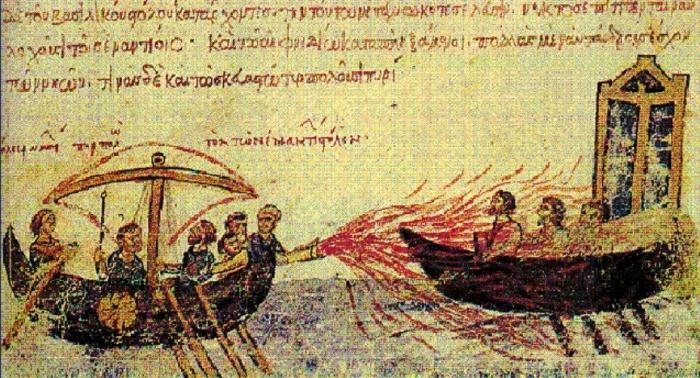According to historical data, the first "Greek fire" was used in 673 during the defense of Constantinople from the siege of the Arabs. Then a secret engineering invention, the exact composition and properties of which are controversial in our time, saved the Byzantine capital. At the same time, there is no doubt that before that, weapons with a similar effect were not used in military conflicts. The fact is that the result of its use has become so overwhelming that the closest analogue to it can only be called the atomic bomb attack of the Japanese cities of Hiroshima and Nagasaki in 1945.

At that time, the siege of Constantinople was carried out mainly from the sea, because from the land the city was almost impregnable. In order to protect himself from the Arabian bulk, the engineer Kallinikos handed over to the then ruling Emperor Constantine IV a recipe for an unknown fuel composition, which was supposed to completely eliminate the attacking fleet. The ruler had no choice but to risk and use the "Greek fire." As a result, the Arabs were so shocked that they fled in panic, and most of their ships were burned to the ground.
The main advantage of the new weapon was that the composition burned both on land and in water. There was no point in extinguishing it, because when interacting with water, the fire only increased, and it was unrealistic to save the ship that was shot at. The raw materials for the “Greek fire” were placed in a vessel, which was then thrown at the enemy due to a special throwing device. Next, the mixture was poured and lit up due to interaction with air. New weapons in the future more than once saved Constantinople from the attacks of the Arabs.

Some time later, Byzantine engineers improved the method of throwing. In their fleet, special pipes began to be installed through which the "Greek fire" was released under pressure created by pumps and bellows. The shot was accompanied by a strong roar, which terrified the enemy. The Byzantine rulers kept the composition of the mixture in strict secrecy, and numerous attempts by other nations to find out this secret were unsuccessful. Only five centuries later, Emperor Alexei III lost power and fled the country. Eight years after this, during the siege of Syrian Damietta, the Saracens used this weapon.
Even after losing its secrecy, the "Greek fire" in military affairs was used for a very long time and lost its relevance only after the invention of firearms. The last historical memory of its use dates back to 1453. To help the combustible mixture during the siege of the same Constantinople, the defending Byzantines and attacking Turks also resorted, who eventually celebrated the victory.
After this, the secret of the mixture was lost, and many historians devoted many years to searching for clues, but this did not lead to success. Due to the fact that the "Greek fire" burned well on the water, many scientists say that the basis for its preparation was oil. The most common opinion is that the mixture was obtained by combining pure sulfur with oil. Then it was boiled and set on fire. As for the proportions of the composition, it still remains a mystery.